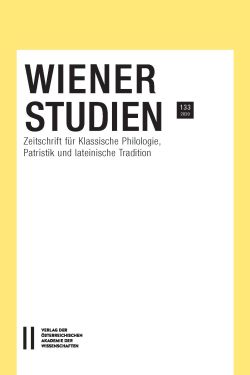
Wiener Studien 133/2020, pp. 107-118, 2020/07/23
Zeitschrift für Klassische Philologie, Patristik und lateinische Tradition
In his Vita Antonii, Athanasius narrates a hostile encounter that his protagonist Antony has with a half-human, half-asinine creature which intrudes upon his solitude in the desert and dies a violent death after Antony banishes it. Many scholars have suggested that this humanoid’s strange appearance is meant to evoke one or other Egyptian deity. In this article I propose that it represents instead a species of centaur from Greco-Roman mythology, the onocentaur. I then argue that Athanasius deploys the story about this creature’s demise as part of a larger narrative strategy in his idealized construction of Antony as a Christian holy man.